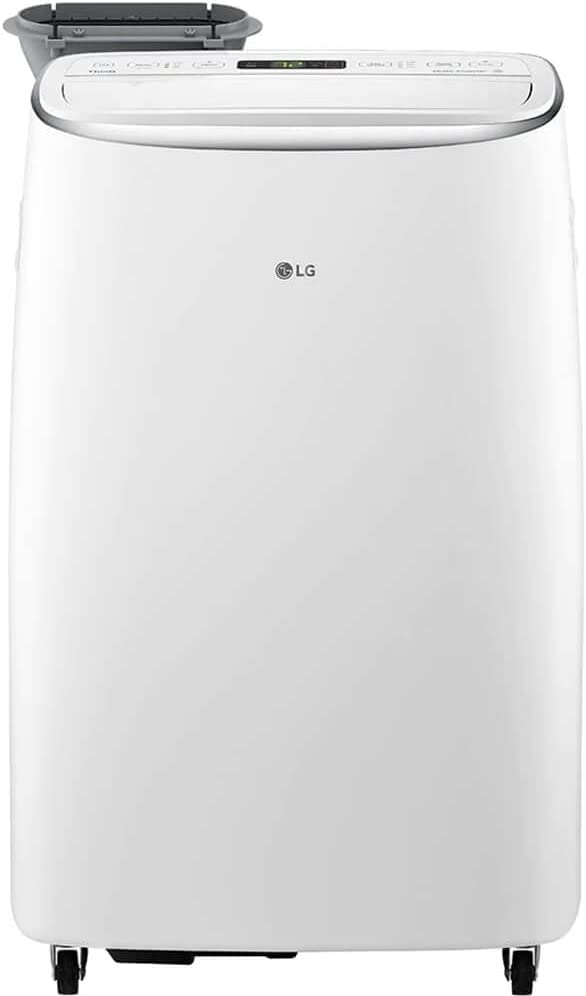Highlights
South Korean tech giant with a strong reputation in smart appliances
Leader in dual inverter technology for energy efficiency and quiet cooling
Offers a streamlined range of window, portable, and U-shaped ACs
Praised for smart home integration, but often let down by glitchy app performance
Known for sleek designs, though sometimes at the expense of long-term durability
Positioned as premium mid-tier, but prices stretch higher than some rivals
.webp)
LG has spent decades building its brand on sleek, high-tech appliances — and its air conditioners are no exception. Originating from South Korea, LG entered the U.S. AC market with a clear goal: merge cooling with modern smart features, ultra-quiet operation, and inverter-driven energy savings. Flagship models like the LW1019IVSM and LW1517IVSM have earned praise from review platforms and consumer guides, and the brand has carved out a niche in “smart window ACs.” But under the glossy surface, LG’s lineup comes with tradeoffs — especially in value, build consistency, and tech reliability. So the question is: does LG’s tech-first approach deliver more comfort, or more complexity?
Customer Support & Warranty
4.1 /5
LG’s support is backed by a big-name infrastructure, but that doesn’t always mean better service. Documentation is excellent, and tools like the app-based diagnosis system are genuinely helpful. But for real issues — defective units, missing parts, warranty claims — the experience can be frustrating. Call center wait times, inconsistent information, and slow replacement timelines show up regularly in reviews. For a brand selling $600 ACs, the support should feel smoother. LG is trusted as a name, but its after-sale service still has room to grow.
Energy Efficiency
4.8 /5
This is where LG really delivers. The inverter tech keeps compressors running at variable speeds, rather than cycling harshly on and off, resulting in significant energy savings. Units frequently score above EER 12 and carry Energy Star Most Efficient labels. In long-term usage, especially in homes where the AC runs for hours daily, users report noticeably lower bills — sometimes up to 20–30% less than with older fixed-speed models. The downside? This efficiency comes at a cost, and buyers should be sure they’ll use the unit often enough to see the payback. Otherwise, it’s expensive efficiency you may never feel.
Build Quality & Durability
4.2 /5
At first glance, LG’s air conditioners look premium — but not all components live up to the design. Dual inverter units feel sturdy and refined, with smooth control panels and metal chassis. But the lower-end models often include flimsy louvers, rattly trim, and cheap-feeling remote controls. Multiple reviews point to early cosmetic wear, and while core components like the compressor hold up well, there’s a pattern of smaller parts degrading too quickly. It’s a tale of two LGs: high-end units are solid, but lower-tier ones feel like they cut corners to hit a price point. You’re not always getting the quality you paid for.
.webp)
Products Variety
4.3 /5
LG keeps its lineup focused — which is good for clarity, but limits choice. Most offerings are window units, with a smaller selection of portable ACs and U-shaped models with better seals and visibility. BTU sizes are well-balanced across the line, and many models come in both standard and Wi-Fi-enabled versions. However, there’s no wall-mounted or built-in options, and portable units often feel like afterthoughts. If you're shopping within their main line, you'll likely find what you need — just don’t expect the variety of options that brands like Frigidaire or Midea offer.
Noise Level
4.7 /5
This is LG’s showpiece. Thanks to dual inverter compressors, their ACs run far quieter than traditional models. With decibel levels dipping to 44–47 dB, LG models are significantly less jarring — especially when the unit is maintaining rather than initiating cooling. That’s a huge win for bedroom users, home offices, and anyone sensitive to mechanical noise. However, the fan can still be audible on high settings, and portable models remain noticeably louder. Overall, LG leads most of the market in this category, though it’s not silent perfection — just a well-tuned hum instead of a mechanical growl.
.webp)
Features & Technologies
4.6 /5
There’s no doubt LG pushes harder on smart tech than most AC makers. The ThinQ app lets you control temperature, schedule cycles, and even diagnose issues remotely. Support for Google Assistant and Alexa is standard in mid-to-high-end models. But while the app is powerful, it’s also buggy: pairing issues, firmware hiccups, and unreliable connectivity show up often in user feedback. For the tech-savvy, this isn’t a dealbreaker — but for more casual users, the app can feel more like a hassle than a help. LG is still ahead of the curve here, but it’s not the seamless smart experience they advertise.
.webp)
Cost & Affordability
3.7 /5
This is LG’s weakest spot. With entry-level inverter units starting around $400 and premium models creeping toward $700, LG positions itself just below luxury — but often without offering luxury build or support. The higher upfront cost can be justified by energy savings and low noise, but for buyers who don’t value smart features, the premium feels unnecessary. There are often better value picks out there, especially for those who prioritize cooling over tech. If you want quiet, efficient, and connected, it’s a good buy. If you just want cold air on a budget — look elsewhere.
Cooling Performance
4.5 /5
On paper, LG's cooling range is well-structured — models cover everything from 6,000 to 24,500 BTUs, with strong airflow and accurate digital temperature control. The dual inverter compressors excel at maintaining stable room temperatures, and lab testing confirms faster cooldown times than most fixed-speed competitors. That said, airflow spread can be narrow, especially in standard window models, which can leave room corners warm unless fan louvers are perfectly angled. While performance is excellent overall, it’s not flawless — and in some layouts, you may need creative positioning to avoid cool spots and dead zones.
.webp)
Conclusion
LG air conditioners offer impressive performance, outstanding energy savings, and some of the quietest operation in the window AC space. Their technology-first approach is admirable — and in many cases, delivers real benefits. But the premium pricing, spotty app reliability, and inconsistent build quality hold them back from being a no-brainer. LG is a great fit for tech-savvy users who want to optimize every setting and enjoy a nearly silent climate. But for those just looking for durable, fuss-free cooling, there are better value options — and fewer setup headaches — elsewhere.





